How to Use HubSpot Knowledge Base to Attract, Engage, and Delight
Written by

If you know HubSpot, then you know the flywheel and how it improves on the traditional sales funnel. It’s so powerful we published a 4-part series on it!
Although the flywheel hasn’t fully replaced the funnel, it does take a unique look at the stages of prospect and customer attraction, engagement, and delight. With the customer at the center of the flywheel, these three drivers create momentum that inspires not only repeat business but brand loyalty.Keeping those three stages in mind, this article explores what motivates people to engage with a company’s website. We’ll soon see how HubSpot’s Knowledge Base provides the ability to connect with prospects in ways that support the complete inbound marketing methodology. Most importantly, let’s discover practical ways that HubSpot’s Knowledge Base can be a game-changing force for you.
What is a Knowledge Base?
Simply put, a knowledge base self-serve library that offers a variety of relevant information about a product, service, or topic. Take a look at HubSpot’s knowledge base digital guidebook to learn more:
RELATED: Creating and Managing a Knowledge Base: The Ultimate Guide
A knowledge base is a proactive support tool that allows customers and prospects to look for answers to their questions at all stages of the buyer’s journey. The knowledge base can take the form of a document library or a community forum where other users assist with questions. It’s an excellent way to streamline a portion of your customer support and results in more satisfied customers — and lower resource costs. Meaning customer service reps will spend less time answering common questions or troubleshooting simple technical issues.
The Need for Knowledge Base Functionality is Growing
Everyone — from an average consumer to a B2B professional — is looking for faster ways to deal with challenges. We want answers now and can’t afford to waste time fixing problems. We have increasingly high expectations of brands and what they can do for us.
Old-fashioned methods of customer care are fading. Why? Because that’s what people want! Providing customers with excellent support with minimal human interaction is the key to attracting them to your product.
Read these stats and see if you think people are ready for self-service customer support:
- 40% of customers expect online assistance in 5 minutes or less; 31% want help instantly1
- 40% of customers prefer self-service over human contact2
- 36% of customers say companies should improve their search functionality and website usability3
Of course, all of this self-service support needs to be wrapped in a modern, intuitive solution. Sounds like customers want access to a user-friendly marketing knowledge base where they can find answers fast without need for external help.
Wait, do people really use knowledge bases? Well, 91% of customers would use an online knowledge base if it were available and tailored to their needs.4 So, that’s a resounding “yes.”
LEARN MORE ABOUT: Why Go HubSpot
Give the People What They Want
Consider this:
- 70% of customers prefer to research questions on a company’s website rather than using phone or email customer support5
One of the tenets of inbound marketing is to offer what customers and prospects are looking for, usually via relevant content. But it goes beyond content. You also need to optimize and manage all interactions on your clean, functional website. As the site provides visitors a great user experience, it’s also giving you access to data that you can use to improve visitors’ satisfaction.
That’s exactly what HubSpot’s Service Hub™ does, and Knowledge Base is only one component of the hub.
Service Hub is a set of tools that incorporates Knowledge Base, Conversations, Tickets, and Customer Feedback surveys to help you organize customer feedback and manage their expectations. It gives companies several options for automating and routing customer interactions — live chat, knowledge base FAQs/articles, forms, Facebook messenger, and team email — so you can offer efficient and effective support. It also provides valuable data that your sales, marketing, and customer service teams can use to attract, engage, and delight customers.
With that, let’s look specifically at some applications of HubSpot’s Knowledge Base and how it can help improve your business results throughout the flywheel stages.
Attraction — How HubSpot Knowledge Base Does It
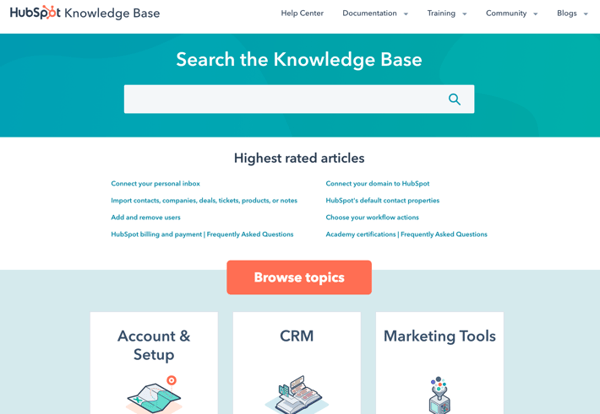 We do love powerful stats. Here’s one more:
We do love powerful stats. Here’s one more:
- 85% of a prospect’s relationship with a business occurs without human interaction6
Companies that leverage their knowledge base, using it as another member of the sales or marketing team, have a leg up on the competition because they’re offering a convenient way for prospects and customers to get answers to their questions. When answers are found, you’ve established yourself as an expert, and they feel confident working with you throughout their buyer’s journey.
Plus, community forums act like “word-of-mouth” referrals or testimonials because many of the answers come from actual users of your product or service.
Now, combine that functionality with a great website design and comprehensive resources. Suddenly, you have a knowledge base that offers SEO benefits, too. Setting up navigation that includes links to additional resources improves search optimization. Using important keywords in your content helps as well.
HubSpot itself is a great example of this. Their knowledge base includes hundreds of how-to articles which boosts their SEO rankings for HubSpot-related search queries such as “how to do [you-name-it] in HubSpot.”
Engagement — How HubSpot Knowledge Base Does It
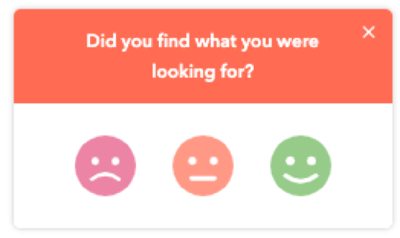 Engaging prospects can be a tricky stage of the inbound marketing process. These folks have shown by their actions that they’re definitely interested, but they’re not ready to pull the trigger and make a purchase.
Engaging prospects can be a tricky stage of the inbound marketing process. These folks have shown by their actions that they’re definitely interested, but they’re not ready to pull the trigger and make a purchase.
Here’s where HubSpot Knowledge Base can shine. What if you integrated it with features on your website, such as the Ticketing and Conversations chat bots? Now, your knowledge base is helping users easily find what they're looking for.
For example, you could set up a knowledge base for FAQs and how-to’s related to using your product or service, how to contact customer support, etc. You integrate chat so that if someone is viewing one of your product pages, or on the knowledge base home page, the chatbot asks: "What can I help you find?" You then use chat logic to help surface knowledge base articles based on keywords they enter in the chat.
Another way to determine if a knowledge base can help in the engagement stage is to evaluate how your customer service team spends its time. If they’re repeatedly fielding the same questions, a resource library gives customers a place to look for easy answers.
The same is true for your sales team getting the same questions from prospects. You can structure the HubSpot library in a way that makes sense to your audience (not designed around internal preferences). So, if you already offer a knowledge base but aren’t seeing much traffic to the pages, consider reorganizing the content to improve visibility and user experience.
Yes, many of these examples cross into the third stage of the inbound marketing flywheel, delight, because you’re delighting prospects and customers by making it easy for them to find answers on their own quickly. Let’s get into that more.
Delight — How HubSpot Knowledge Base Does It
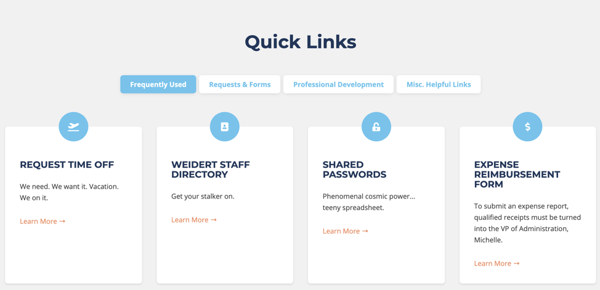 OK, one more stat:
OK, one more stat:
- 90% of company intranets fail before 3 years7
You’ve likely had a job during which the company intranet was clunky and antiquated. A great application of both internal customer delight and HubSpot’s Knowledge Base is to use it to create an aesthetically pleasing and helpful intranet. An intranet built in Knowledge Base can include easy-to-find links that direct users to expense reports, time off sheets, an employee directory, and much more. It’s easy for employees to find what they need, make a request, and get back to other duties.
Delighting employees is important for retention, just like delighting customers is important to keep them coming back.
Here’s another example: a company we work with uses HubSpot Knowledge Base to house internal SOPs to make things easy and efficient for their staff. These are tagged by department (marketing, sales, service, operations, HR, etc.) so it's extremely easy to find what’s needed.
Plus, using HubSpot Enterprise, you can use the partitioning features to restrict access to certain tags by department and even password protect customer portals for an additional privacy option.
Here are some additional HubSpot Knowledge Base features that delight users:
- Filtering Options — Category tags play a key role in optimizing the browsability and findability of answers within a knowledge base. Filtering related information provides an easy way for users to locate what they need.
- Ease of Use for Writers — HubSpot has added features to their article editor, such as new ways to create tables, anchors, and callouts, so writers can work right in HubSpot and highlight important areas for their readers. (It’s very similar to the blog editing features in HubSpot.)
- More Design Control — When someone is trying to troubleshoot an issue, they’re stressed, so the quicker they find their answer, the better the experience. That means design architecture that’s clear and helpful.
- Popups for Instant Feedback — Instead of using pop-up forms as a marketing tactic (promote content, drive blog subscriptions, etc.), use HubSpot’s single-click feedback surveys on your Knowledge Base articles to instantly gain information that will improve the user experience.
There’s no doubt that a well-designed, self-service knowledge base can help increase customer attraction, engagement, and delight. What more can you ask from a software tool?
Knowledge Base is only one tool to help reduce friction and increase force in your marketing, sales, and service. Looking for more opportunities? Use this fully loaded, 21-page (we don’t mess around) digital guide to apply the inbound flywheel to your business — it includes worksheets you can use immediately. Get your copy of our Flywheel Overview and Workbook.
Subscribe To Our Blog
Information. Insights. Ideas. Get notified every time a new Weidert Group blog article is published – subscribe now!
You May Also Like...
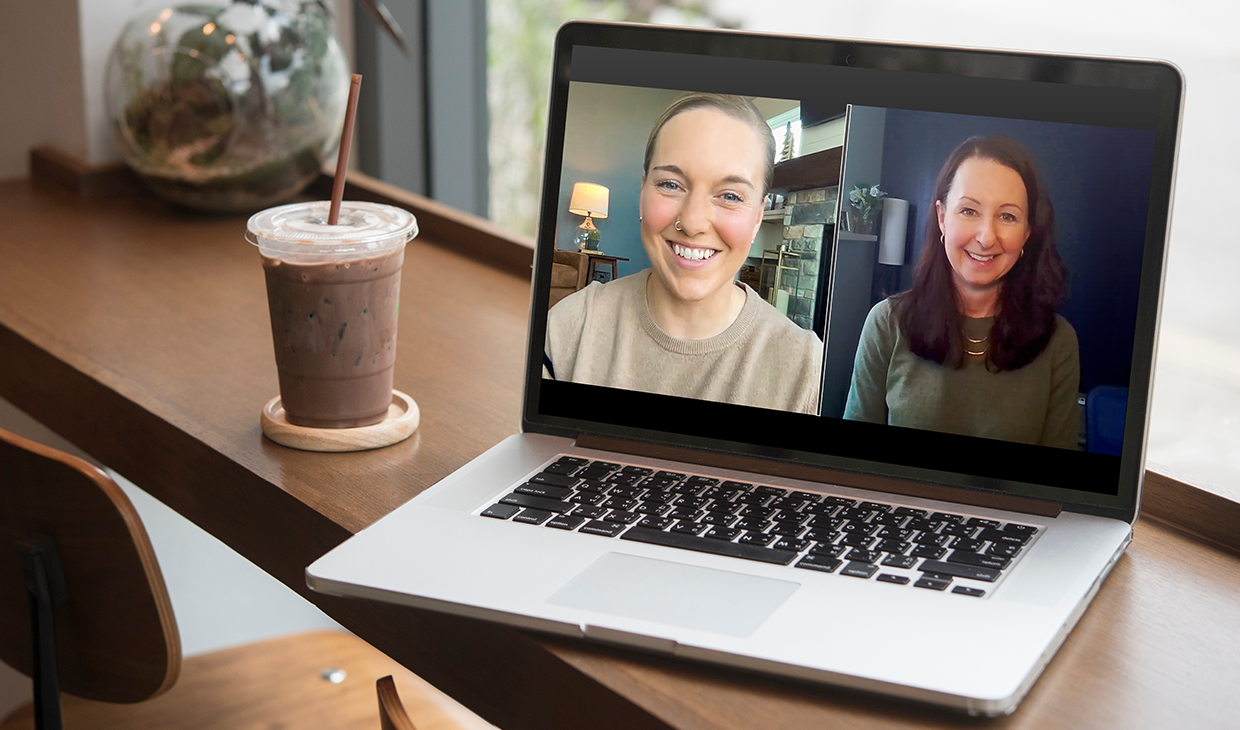
Search Engine Optimization
How Falcon Rebuilt Industrial AI Search Visibility in 2025
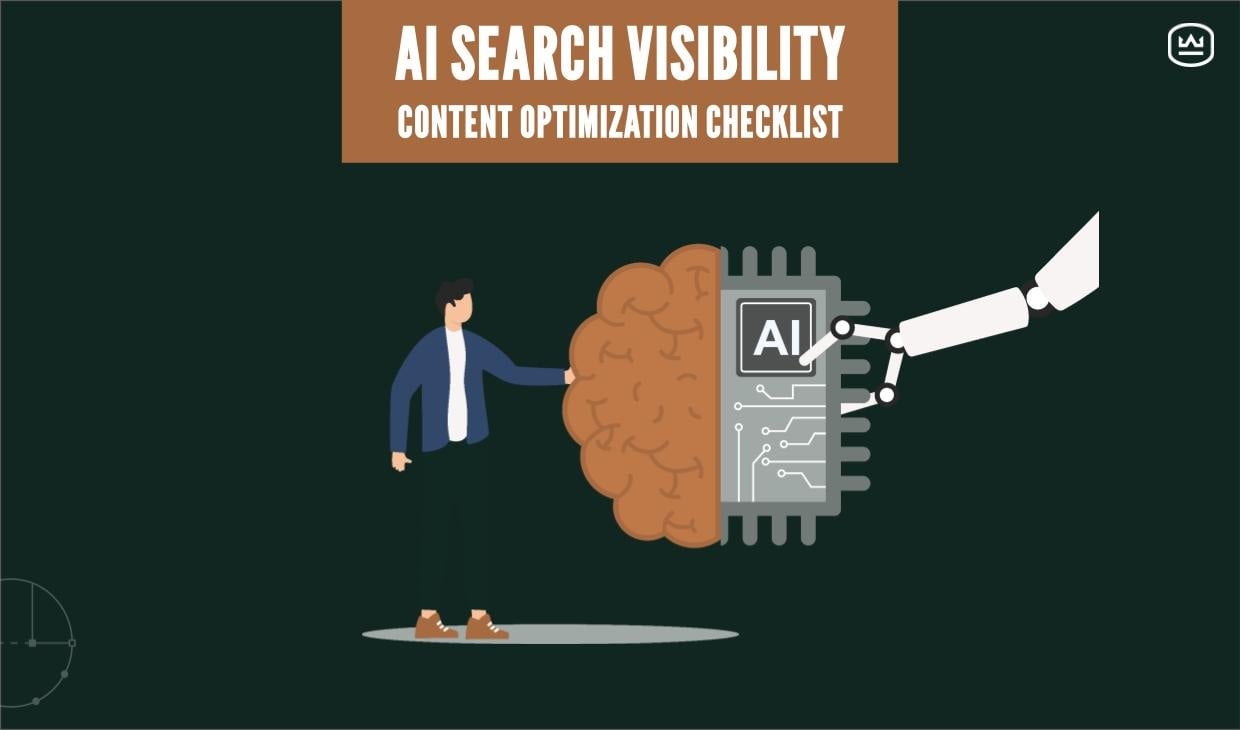
Search Engine Optimization
The New Search Visibility Checklist for AI-Era Content Marketing

Search Engine Optimization
SEO Isn’t Dead. It’s Evolving: How B2Bs Can Stay Visible in the Age of AI
Accelerate Your Growth with
Weidert Group
If you’re ready to explore a partnership, request a personalized consultation with our team.

